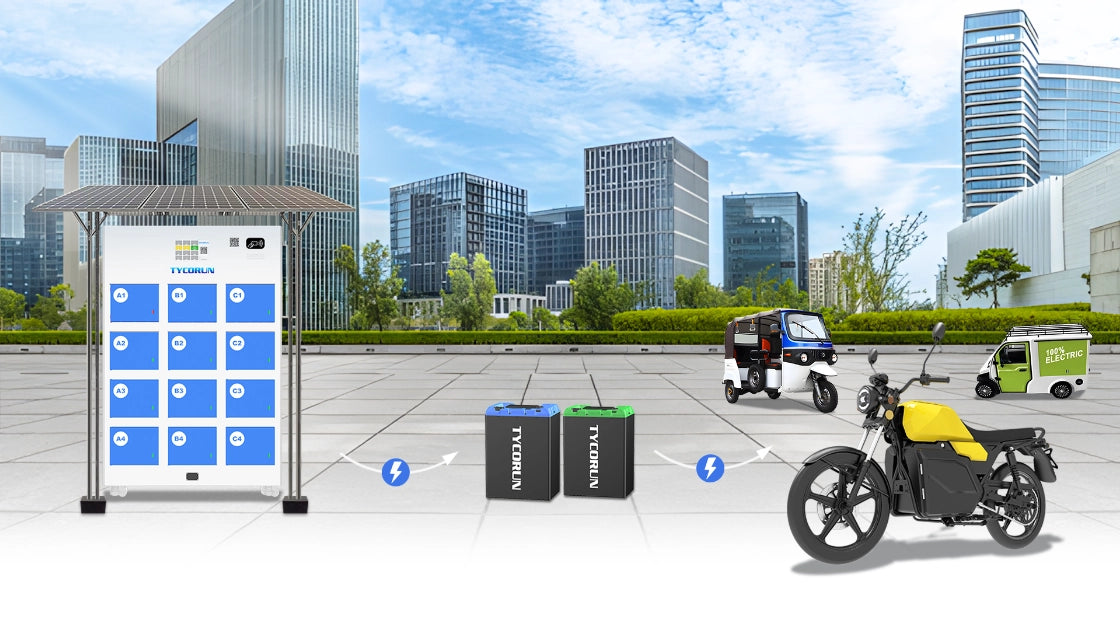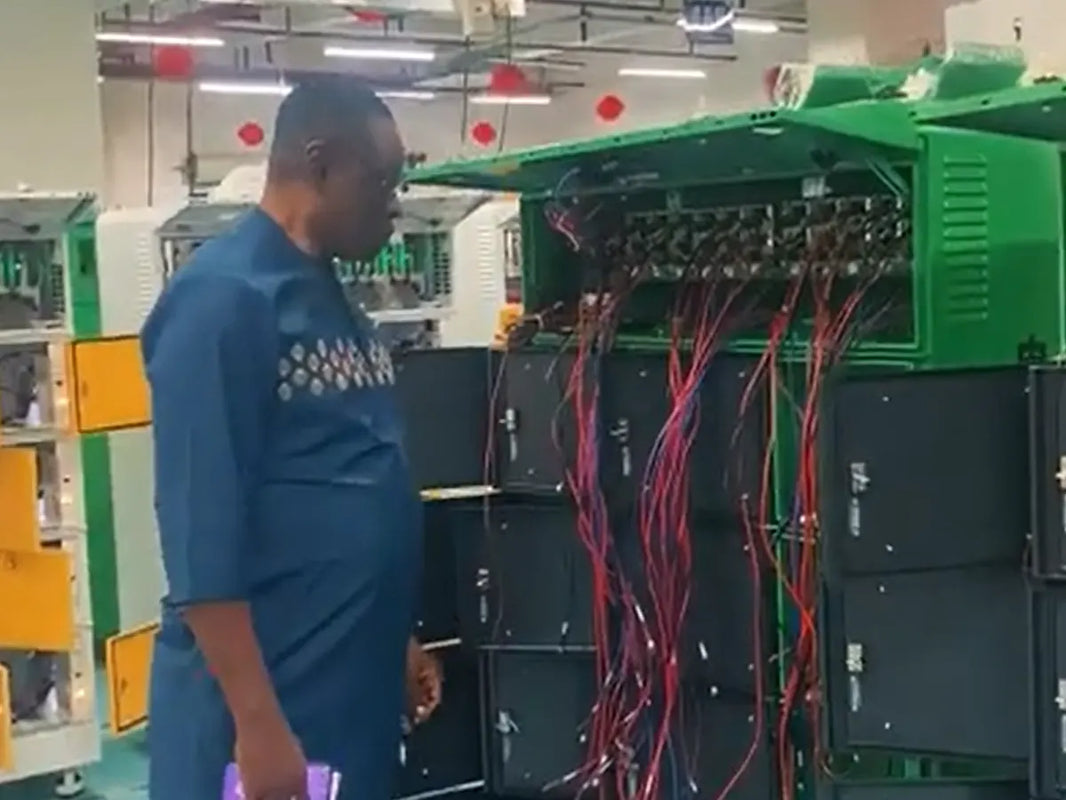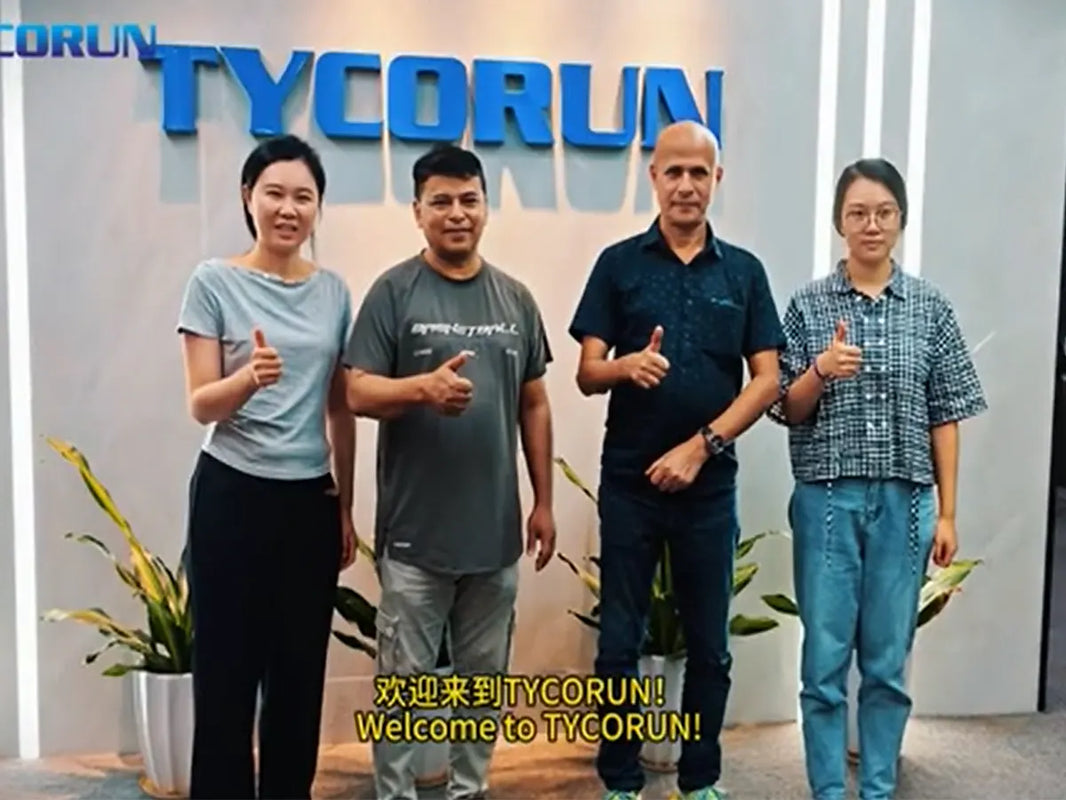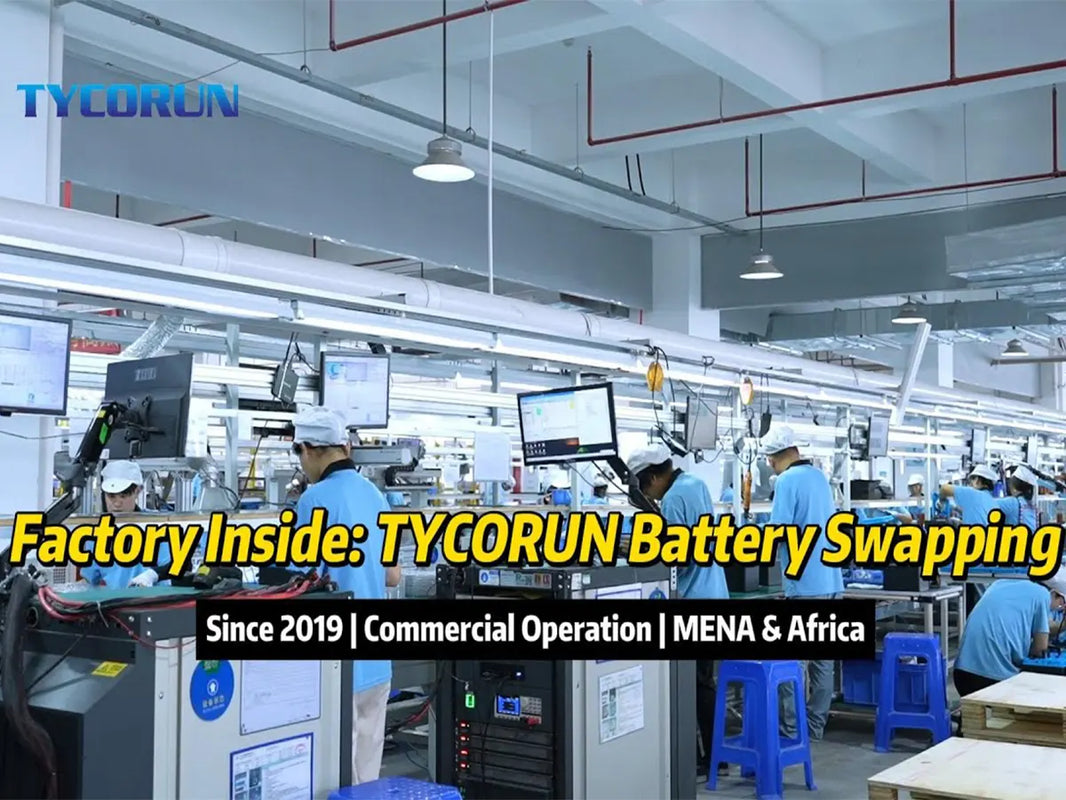Main content:
- What is a Silicon Carbon Battery?
- Development History of Silicon Carbon Anodes
- Advantages of Silicon Carbon Batteries
- Disadvantages of Silicon Carbon Batteries
- Silicon Carbon Battery Vs Lithium Ion
- Application Scenarios of Silicon Carbon Batteries
- Technological Routes of Silicon Carbon Anodes
- Application of Silicon Carbon Anodes in Lithium-Ion Batteries
- Conclusion
A silicon carbon battery is a lithium-ion battery that uses a silicon-carbon composite as the anode. This combination improves energy density, conductivity, and structural stability. Compared with traditional graphite batteries, silicon carbon batteries can store more energy and support faster charging, making them ideal for EVs and energy storage.
What is a Silicon Carbon Battery?
A silicon carbon battery is a lithium-ion battery that uses a silicon-carbon composite material as its anode. Its anode material combines silicon with carbon materials of varying structures, significantly improving the battery's capacity and electrochemical performance.
Silicon has the highest theoretical specific capacity known for anode materials, reaching over 10 times that of the currently mainstream graphite anode. It offers high safety, abundant resources, and low production costs. Carbon materials, on the other hand, have high electrical conductivity, a relatively stable structure, minimal volume expansion during cycling (typically less than 10%), and excellent flexibility and lubricity. Silicon-carbon anode materials combine the advantages of both and are a key area of future anode material development.
Development History of Silicon Carbon Anodes
Following Japan's successful development of a lithium-ion battery using petroleum coke as its anode in 1990, nanostructured silicon particles were combined with carbon in 1996 and subsequently used in anode materials. In 2017, Tesla used carbon-coated silicon oxide technology in its Model 3, achieving an energy density of 300 Wh/kg.
As of 2020, silicon-based anodes have experienced explosive growth and are gradually being incorporated into industrially produced electrodes. Small-scale silicon nanoparticles and two- and three-dimensional silicon structures have been studied in detail, and mature systems have been established.
Advantages of Silicon Carbon Batteries
The silicon carbon battery delivers high energy density, improved cycle stability, and fast charging capabilities. These features make it particularly attractive for electric vehicles, portable devices, and renewable energy storage.
High Energy Density
Silicon's theoretical specific capacity (approximately 4200 mAh/g) far exceeds that of graphite (372 mAh/g), significantly increasing battery energy density by 30%-50%, making it suitable for electric vehicles and portable electronic devices.
Reduced Volume Expansion
Silicon can expand by up to 300% during charge and discharge, leading to structural cracking and capacity degradation. Carbon materials (such as graphite and carbon coatings) act as a buffer matrix, absorbing some of the expansion stress and extending battery life.
Improved Cycle Life
Compared to pure silicon anodes, silicon-carbon composites offer better cycle stability (e.g., from dozens of cycles for pure silicon to 500-1000 cycles).
Fast Charging Potential
Carbon materials have superior conductivity to pure silicon. Composite materials can improve electrode conductivity (what is the role of the electrode) and support higher charge and discharge rates.
Disadvantages of Silicon Carbon Batteries
High Cost
The nano-sizing of silicon materials (e.g., nano-silicon particles) and the complex carbon-based composite processes (e.g., chemical vapor deposition) result in higher production costs than graphite anodes.
Low Initial Charge and Discharge Efficiency
During the initial charge, silicon reacts with the electrolyte to form a solid electrolyte interface (battery SEI) film, consuming a large amount of lithium ions and resulting in low initial Coulombic efficiency (which requires improvement through pre-lithiation and other techniques).
High Process Difficulty
The uniform dispersion and structural design (e.g., core-shell structure) of silicon-carbon composites require sophisticated preparation techniques, making consistent mass production a significant challenge.
Silicon Carbon Battery Vs Lithium Ion
| Item | Lithium-ion Battery (Graphite Anode) | Silicon-Carbon Battery (Si-C Anode) |
|---|---|---|
| Anode Material | Graphite, layered structure, small volume change, stable | Si + Carbon composite, carbon buffers Si expansion, higher capacity |
| Energy Density | 180–250 Wh/kg, close to theoretical limit | 300–400 Wh/kg, higher capacity |
| Cycle Life | ≥1500 cycles, longer lithium ion battery life | 500–1500 cycles, shorter lifespan |
| Fast Charging | Prone to Li plating, moderate fast-charging | Higher lithiation potential, supports high-rate fast charging, up to 80% in 12 min |
| Cost | Mature process, low cost | Complex process, high cost, expected to decrease |
| Applications | Consumer electronics, EVs, energy storage | High-end electronics, EVs, drones, wearables, semi-solid batteries |
Application Scenarios of Silicon Carbon Batteries
Thanks to its high capacity and stable structure, the silicon carbon battery is widely used in EVs, hybrid vehicles, consumer electronics, and energy storage systems, becoming a promising alternative to conventional lithium-ion batteries
High-Energy-Density Lithium Batteries
Silicon carbon negative electrode materials are widely used in electronic devices that require long battery life, such as high-end smartphones, laptops and portable power supplies due to their high energy density characteristics.
Electric and Plug-in Hybrid Vehicles
In electric vehicles and plug-in hybrid vehicles, silicon carbon negative electrode materials can help improve the energy density of the battery, thereby increasing the vehicle's range, and are an important development direction of new energy vehicle battery technology.
Energy Storage Systems
For energy storage applications such as grid regulation and renewable energy storage, silicon carbon negative electrode materials can provide higher energy storage efficiency and help improve the economic benefits of the system.
Aerospace and Military
In the aerospace and military fields, there are extremely high requirements for the energy density and stability of batteries. Silicon carbon negative electrode materials can meet the needs of these special applications.
Technological Routes of Silicon Carbon Anodes
The preparation process of silicon carbon negative electrode is mainly based on the embedding method. According to the composite method of silicon and carbon, silicon carbon negative electrodes are mainly divided into three types, namely, coating type, embedding type and composite type. Because the production process for intercalated silicon-carbon materials is similar to that for graphite anodes, they were the first to achieve commercialization. However, intercalated silicon-carbon anodes also have certain drawbacks, such as a relatively low silicon content, resulting in a less significant improvement in energy density compared to graphite anodes.
The core difficulty in silicon-carbon anode production lies in the preparation of nanosilicon powder. Currently, the carbon material compounding and sintering processes in silicon-carbon anode production are relatively mature. However, given the high surface energy of nanosilicon, which easily agglomerates into micron-sized particles, this reduces the cycling stability and initial efficiency of the silicon-carbon anode. Currently, there are three main methods for preparing nanosilicon powder: mechanical grinding, chemical vapor deposition (CVD), and plasma evaporation and condensation (PVD).
Next-generation silane dehydrogenation (CVD) technology for silicon-carbon anode production needs improvement. This technology uses SiH₄ as a silicon source and deposits amorphous silicon on the surface and internal voids of graphite via CVD. Using C₂H₂ as a carbon source, a carbon layer is then coated on the particle surface using CVD, creating a composite material consisting of carbon-coated silicon nanolayers embedded in graphite.
Currently, silicon-oxygen (second-generation silicon-oxygen, mostly shipped overseas) dominates silicon-based anode products. This is primarily due to the high maturity of silicon oxide products, represented by companies like BYD and Shanshan. Silicon-oxygen anodes need improvement in initial efficiency and energy density.
To increase energy density in the medium and long term, material manufacturers are favoring the development of silicon-carbon anodes, particularly those using vapor deposition. This approach essentially aims to unlock the upper limit of energy density, control expansion, and improve cycle life. Existing silicon-carbon anodes are produced using traditional grinding methods. This method results in large silicon particles (typically over 100 nm), making expansion difficult to address.
The CVD method deposits silicon nanoparticles onto a carbon substrate to form a composite material. Due to its uniform composition and dense structure, the composite material produced by CVD has a lower expansion rate, significantly improving cycling performance. This allows for greater utilization of the high-capacity performance advantages of silicon-carbon anodes. Once the product matures and costs are reduced through scale-up, it is expected to be widely used.
Application of Silicon Carbon Anodes in Lithium-Ion Batteries
Silicon-carbon composite anode materials constructed from silicon materials of varying dimensions exhibit excellent energy storage properties. Silicon-carbon anodes with a yolk-shell structure, formed by zero-dimensional silicon nanoparticles and a carbon shell, are nearing practical application as high-performance lithium-ion battery anode materials. Researchers have successfully fabricated silicon nanospheres (SiNSs) in a one-step process using high-frequency thermal plasma technology.
The uniform distribution of SiNSs within the carbon support is achieved, enabling the controlled synthesis of silicon nanospheres/porous carbon (SiNSs/PC). After 100 charge-discharge cycles, the specific capacity reached 778 mAh/g, while maintaining microstructural stability. The yolk-shell structure, based on the core-shell structure, effectively improves the specific capacity of commercial lithium-ion batteries by creating a gap between silicon and carbon.
At the same time, the outer carbon shell prevents direct contact between silicon and the electrolyte and provides ample space for silicon expansion. However, its hollow structure results in insufficient conductivity and tap density. Researchers fabricated a yolk-shell structure (Si/C-CNT#3). Carbon nanotubes were grown on the inner surface of the carbon shell through a heat treatment process and then encapsulated within a carbon layer to form a carbon nanotube layer.
Transmission electron microscopy revealed that the silicon grain size increased before and after lithium insertion, but returned to its initial size after charge-discharge cycling, demonstrating the material's excellent dimensional stability.
One-dimensional silicon materials can alleviate internal stress in electrodes, provide efficient charge conduction pathways, and thus reduce volume expansion, exhibiting excellent charge-discharge stability and high-rate stability. Researchers have proposed a method for the efficient recycling of high-energy-density, highly stable silicon nanowires, achieving a high-capacity silicon nanowire array of 2381.7 mAh/g. They also fabricated SiO/Si NWs with adjustable diameters within a graphene shell. This novel silicon-based nanostructure, unlike traditional silicon monoxide materials, exhibits anisotropic diffusion that effectively prevents material fracture, thereby improving electrochemical performance. The structure maintains a charge-discharge performance of 650 mAh/g after 1000 cycles at 2 C.
The two-dimensional silicon membrane effectively shortens the lithium ion transport path on the electrode surface, thereby improving rate capability. The researchers used an electrochemical process to prepare (110)-faced silicon nanoribbons. Using carbon-free coating, pre-oxidation, and doping techniques, they prepared a solid electrolyte interface (SEI) film with high ionic conductivity, high stability, and long cycle battery performance.
After 2000 cycles of charge and discharge, the specific capacity remained at 1721.3 mAh/g (80% of the specific capacity was maintained at high rates), and the Coulombic efficiency reached 83% for the first time. Furthermore, researchers used etching of montmorillonite to fabricate ultrafine SiNSs with an average thickness of less than 2 nm.
A modified Si-NSs@rGO composite prepared via electrostatic self-assembly demonstrated high rate performance, with a specific capacity of 2395.8 mAh/g (at 0.05 A/g), maintaining a capacity of 1727.38 mAh/g at a threshold current density of 10 A/g. After 1000 cycles, the energy loss during cycling at 2 A/g was only 0.05%, and the Coulombic efficiency reached 99.85%. The thickness of the silicon nanosheets provides excellent lithium storage properties, significantly improving the material's diffusion rate and cycling stability.
The three-dimensional structure of the silicon anode offers a high surface area and excellent electrolyte mobility, facilitating rapid lithium ion transport and reducing impedance. Researchers developed a nitrogen-doped silicon sandwich-structured anode, N-G@Si-30@HSi, using CVD and etching methods.
This anode exhibits minimal volume change during charge and discharge, high stability, and overcomes the issue of solid electrolyte interface membranes. N-G@Si-30@HSi exhibits a reversible capacity exceeding 1286 mAh/g at 0.5C charge and discharge, with a stable Coulombic efficiency of 81.0% after 1400 cycles. After 10,000 cycles at 5C and 10C, the reversible capacity remains at 817 mAh/g and 537 mAh/g, respectively.
Conclusion
The silicon carbon battery offers higher capacity and longer life than conventional lithium-ion batteries. As production technology improves, it is expected to play a key role in electric transportation and renewable energy applications.
Related articles: battery management system, deep-cycle batteries, battery capacity















